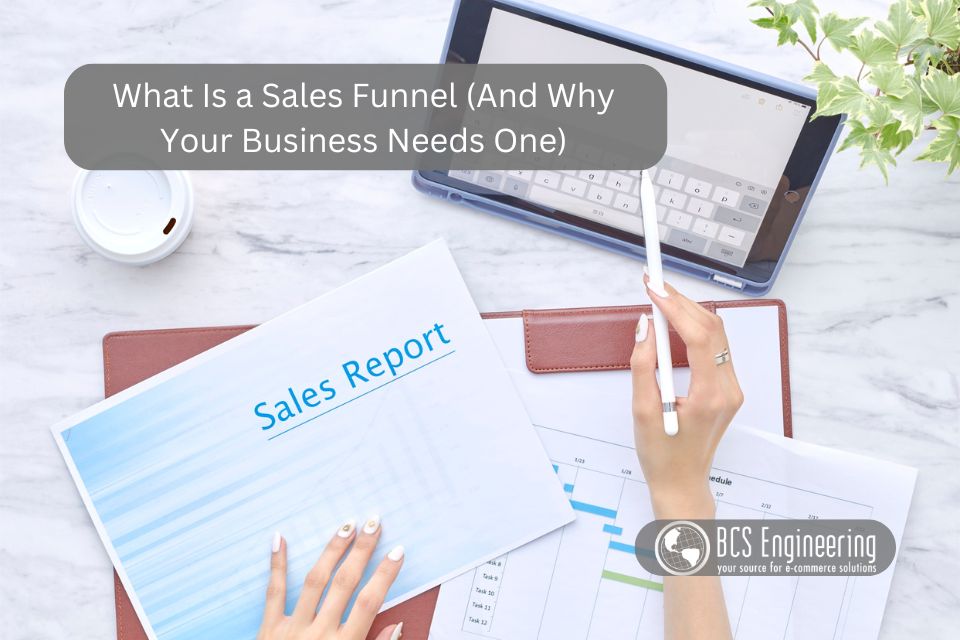You’ve probably heard the term sales funnel tossed around in business circles, but what does it actually mean? And more importantly—do you really need one?
In short: yes. A sales funnel is a powerful tool that helps guide potential customers through their buying journey, from the moment they first hear about you to the point they become a loyal customer.
Let’s break it down.

What Is a Sales Funnel?
A sales funnel is a step-by-step process that leads someone from being a complete stranger to becoming a paying customer. It’s called a “funnel” because the number of people at each stage gets smaller, narrowing down from curious onlookers to committed buyers.
Think of it as your customer journey, organized into a structure that makes it easier to understand, improve, and optimize.
The Stages of a Sales Funnel
Most sales funnels are made up of four main stages:
1. Awareness
This is the top of the funnel. It’s when people first discover your business—maybe through a blog post, social media, a podcast, or a Google search.
Your goal at this stage? Get noticed and start building trust.
2. Interest
Now that they know who you are, they start to learn more. Maybe they follow you on Instagram, join your email list, or read more of your content.
This is where you build a relationship by providing value, educating them, and showing them how you can help.
3. Decision
Here’s where things get serious. The potential customer is considering their options, including you and your competitors. They’re weighing the pros and cons.
Your job is to show them why you’re the best fit—through clear messaging, social proof, and irresistible offers.
4. Action
This is the bottom of the funnel. They make a purchase, book a call, sign a contract—whatever action you want them to take.
But it doesn’t stop there! After the sale, you can continue to nurture them into repeat buyers and raving fans (aka, the loyalty stage).
Why Sales Funnels Matter
Without a sales funnel, you’re leaving your customer journey up to chance. A funnel gives your marketing purpose and direction.
Here’s why it’s a game-changer:
- Clarity – You understand where people are dropping off and where you can improve.
- Consistency – You know what to say and offer at each step.
- Conversions – You increase the chances that someone who finds you will actually buy from you.
Do You Already Have a Funnel?
If you have a website, a social media presence, and an email list—you probably already have the pieces of a funnel. The next step is putting them together in a way that leads people naturally from interest to action.
That could look like:
- A blog post → free download → email sequence → offer
- Instagram post → DM conversation → discovery call
- Ad → landing page → webinar → product pitch
Creating a Funnel That Works for You
A sales funnel isn’t about being pushy—it’s about creating a clear, intentional path for your audience to follow. When done right, it feels natural and helpful to the customer… and it works wonders for your business.
So if your marketing feels scattered or you’re not seeing results from your efforts, it might be time to step back and look at your funnel. A little strategy can go a long way.
Struggling with your sales funnel? Whether you’re unsure what to sell, overwhelmed by the tech, or just tired of spinning your wheels, we’ve got you covered. In our latest eCommerce Made Easy podcast episode, guest expert Shannon Gaither shares how to go from idea to income with a sales funnel that’s simple, sustainable, and actually works—even if you don’t have a team or a tech background.
